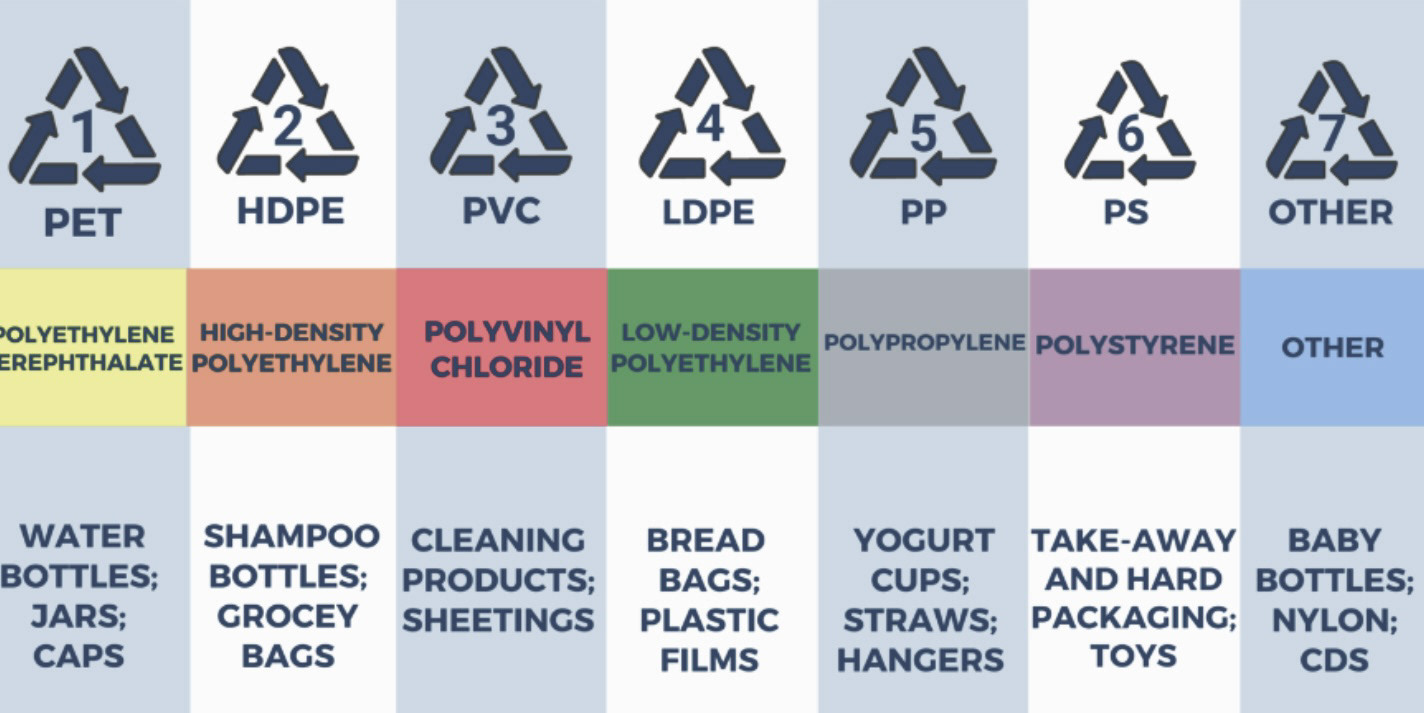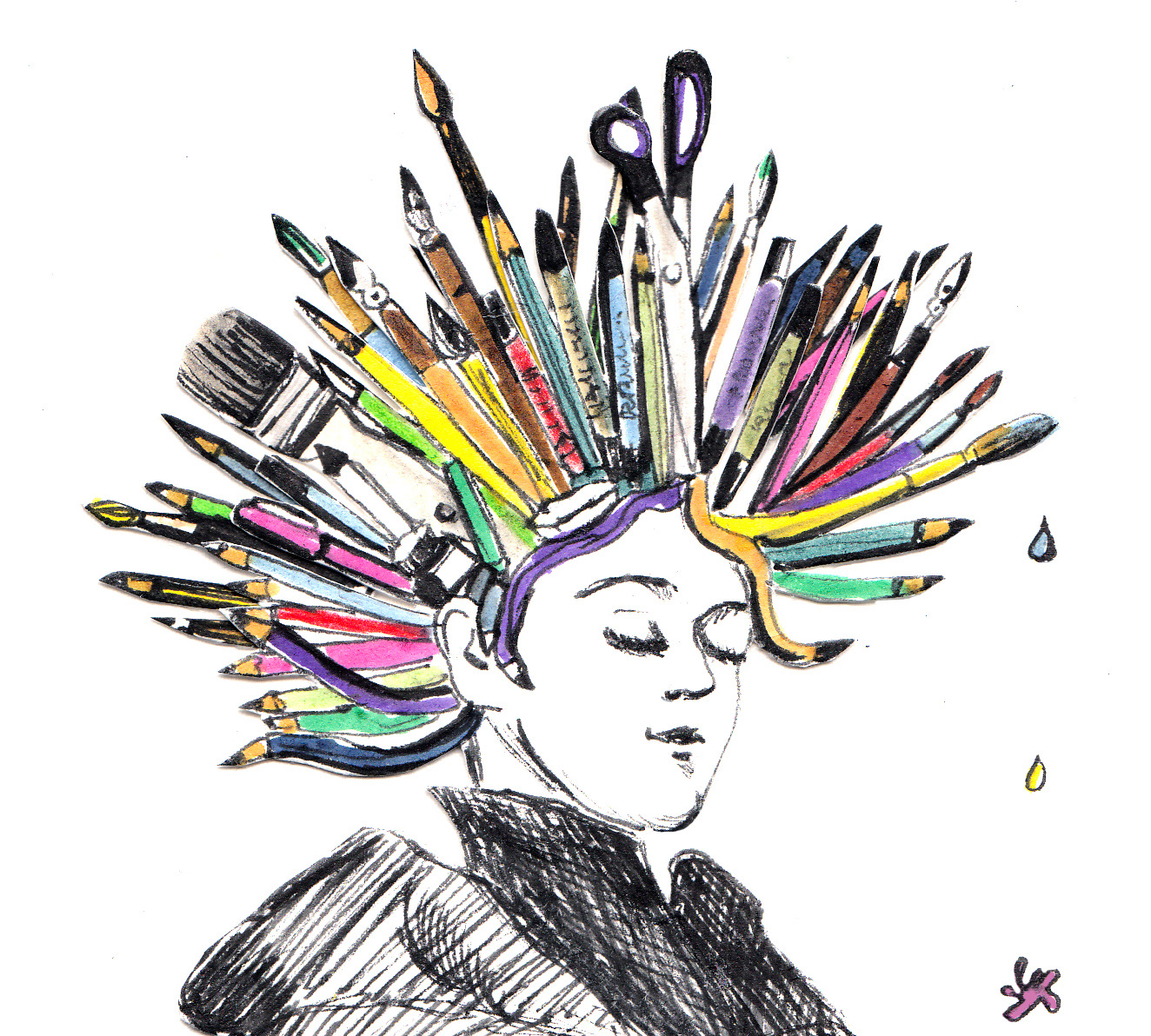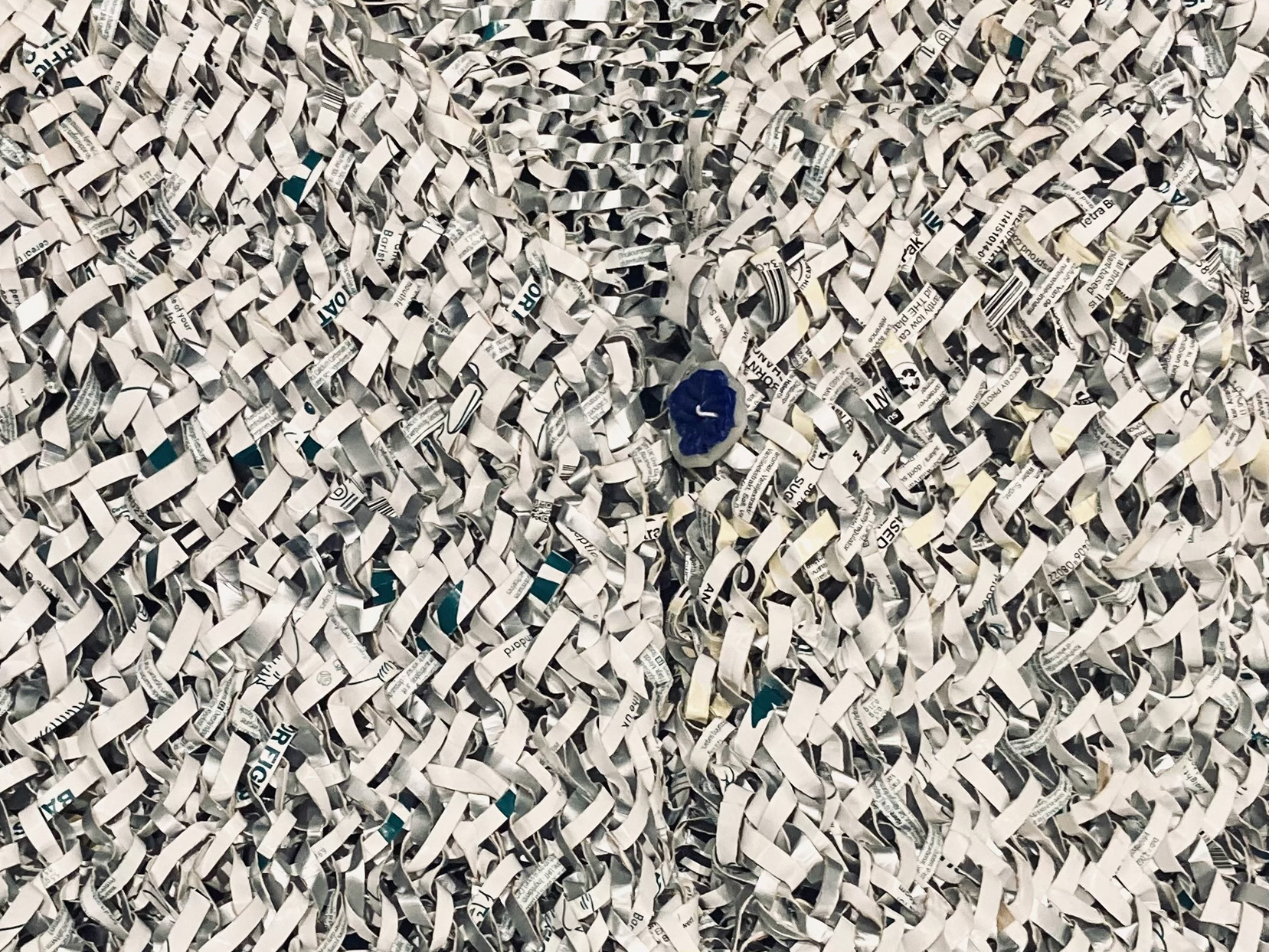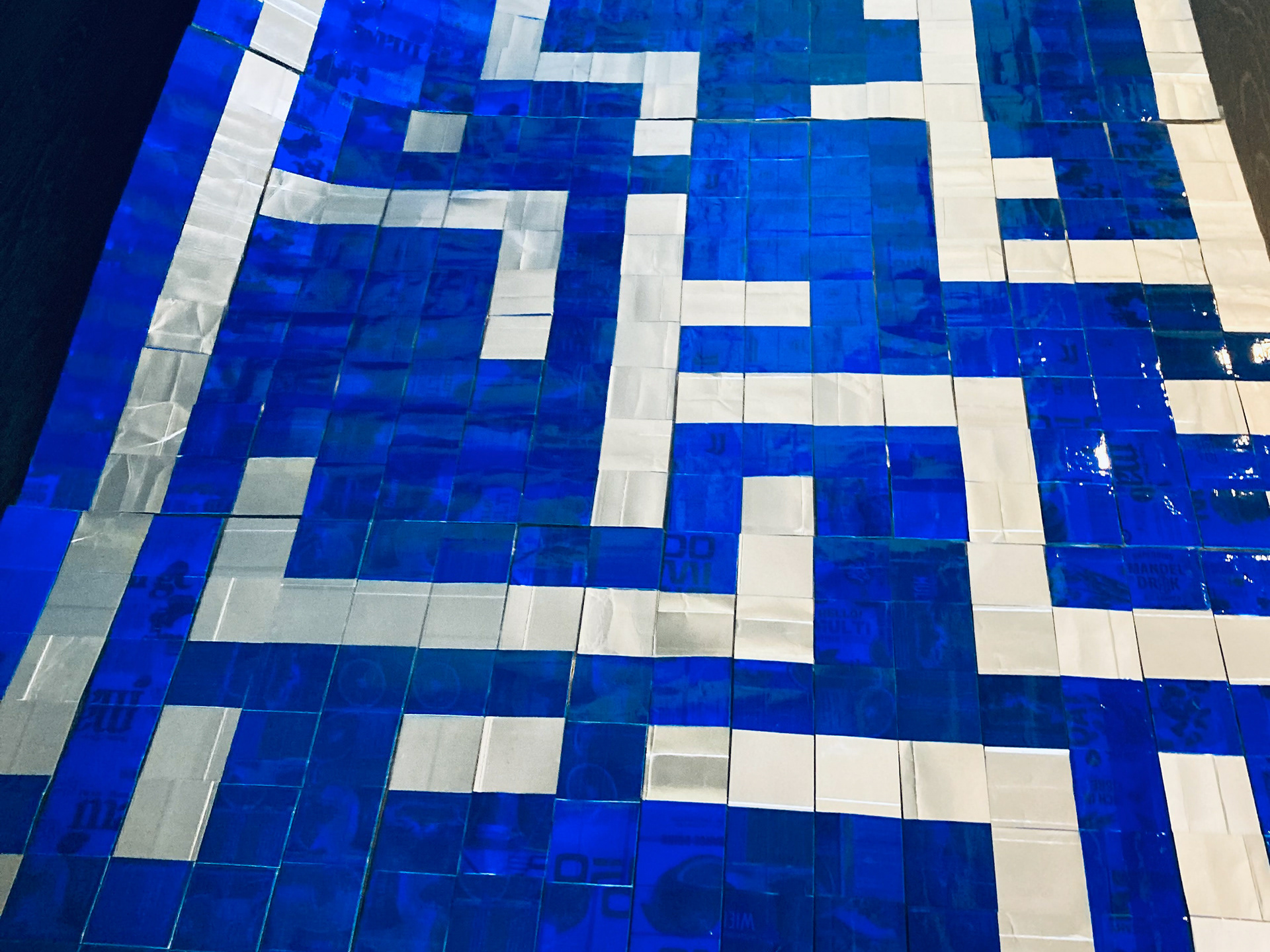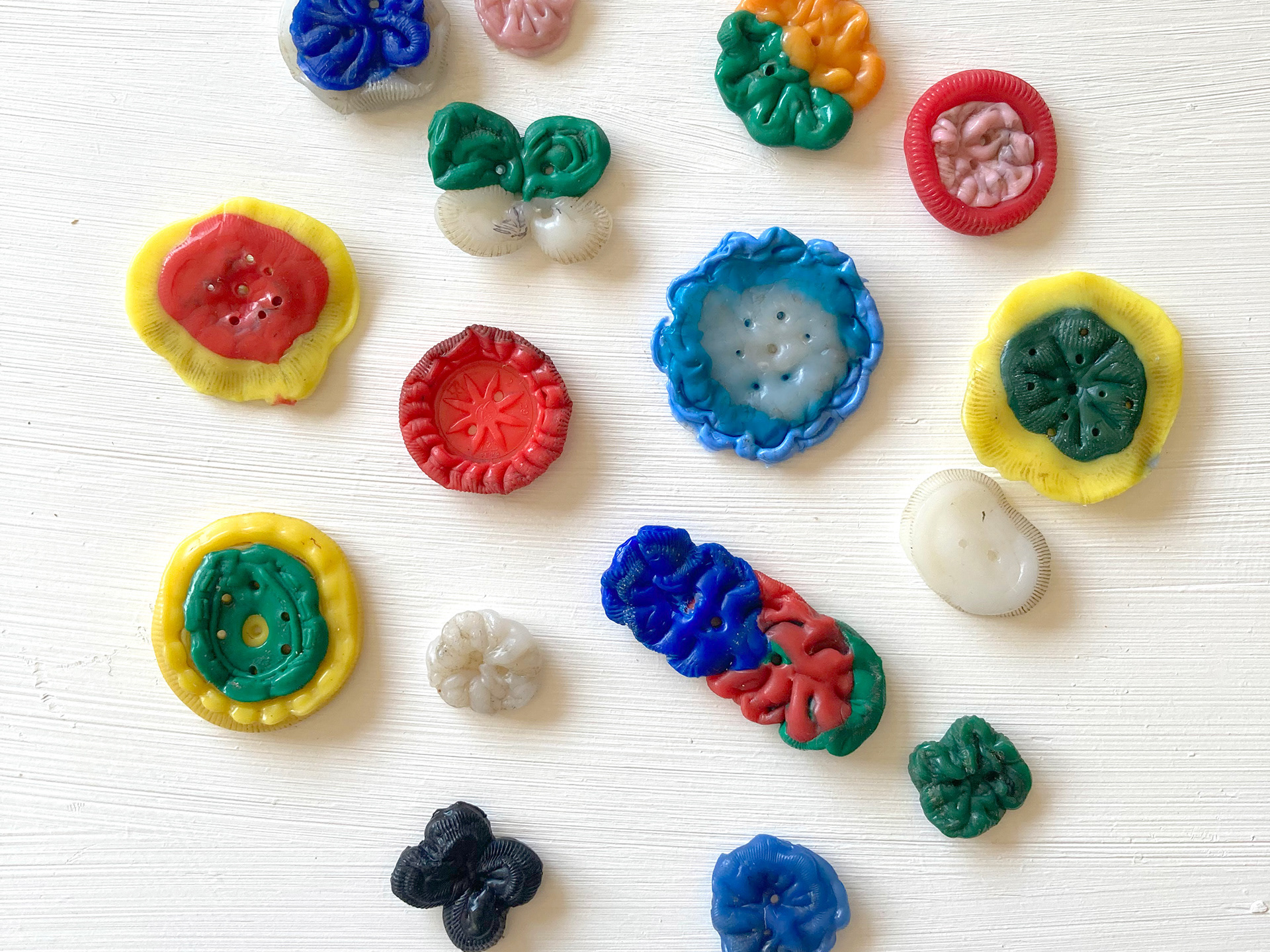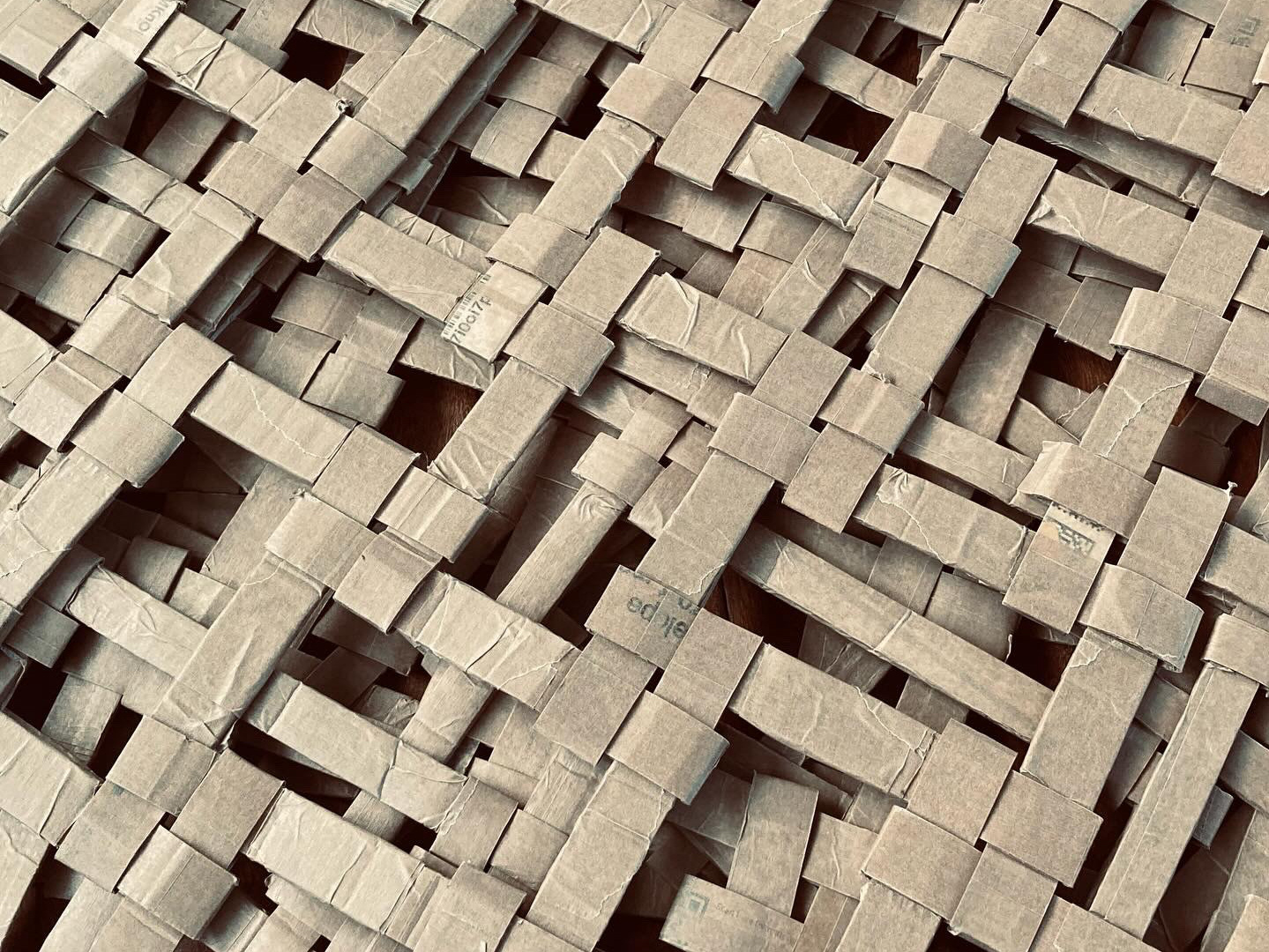About the material:
In 1988 the Plastics Industry Association developed the Resin Identification Code to promote plastic recycling. The numbers from 1 to 7 correspond to different plastics. For easier further recycling it is better not to fuse different type of plastics together. In this project I manly used Plastic number 4- a Low-density polyethylene or LDPE.
LDPE might be both durable and flexible. It does not release harmful chemicals, has good transparency. Doesn’t break easily. And it resists acids, bases, and oils.
According to United Nation report ´Plastic is forever’ plastic waste can take anywhere from 20 to 500 years to decompose, and even then it never fully disappears , it just gets smaller and smaller . Yet of all discarded plastic so far , 12% has been incinerated, only 9% has been recycled and the remainder has either been despised of in landfills or released in to the environment
Availability:
multiple packaging goods are made from LDPE: as dry cleaning bags,wrapping for water bottles, grocery bags and frozen food bags, flexible container lids
About the idea and process:
I started to experiment with LDPE when working on the performance "Wasted" production and idea by Kristina Mauruševičiūtė, Teatro istorijos.
I have used the following technique : first layer of parchment paper + second layer LDPE plastic pieces that I wanted to fuse together + third layer of parchment paper . Ironing on top of it, without a steam.
Make sure to cover all the plastic with a parchment paper before applying the iron.
Pros and cons
I love the possibility that this material offers to make custom sheets, of desirable sizes and later on join them toghether. I also see it as a valuable way to recycle single use packaging in to new material for the set design.
HDPE is considered safe due to it's non-toxicity, however I would suggest open windows or if possible do the work outside, to avoid unpleasant smell of melting plastic.
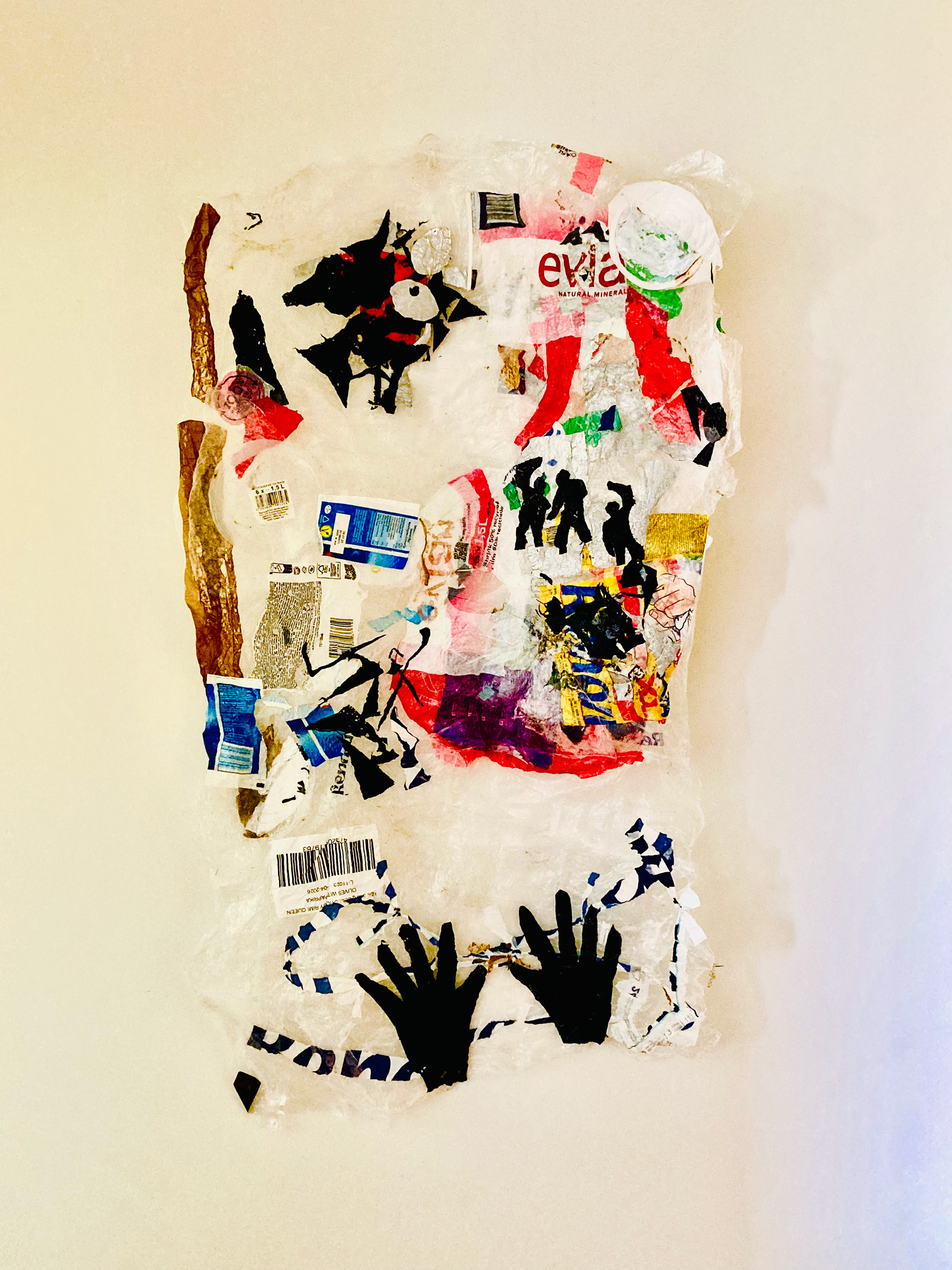
Chair covering
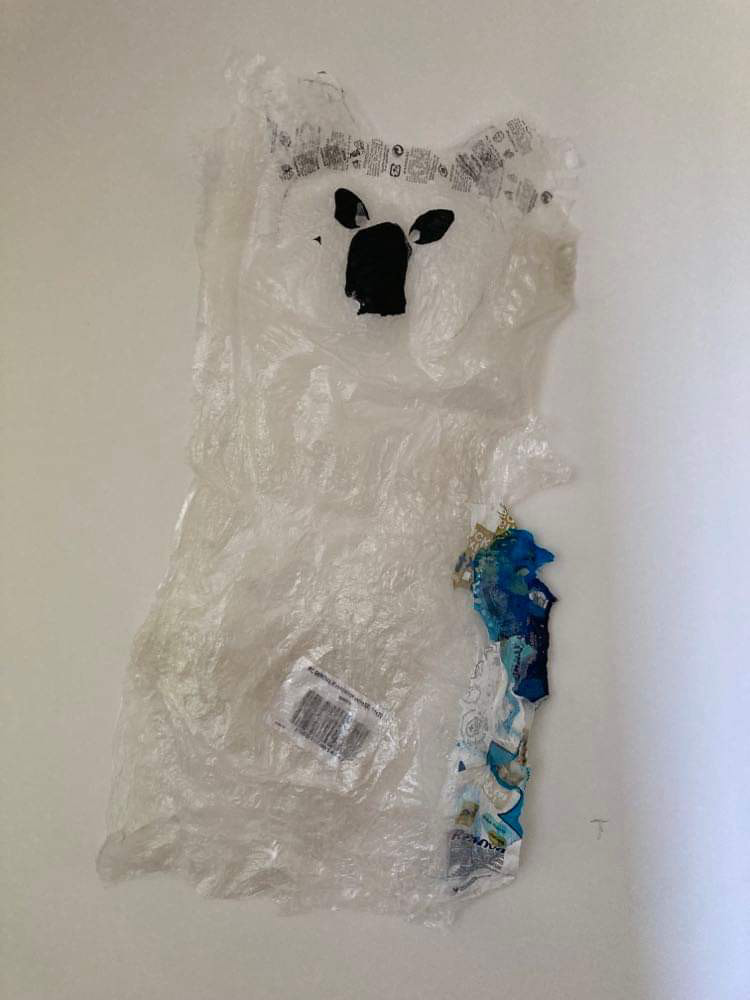
Panda mask
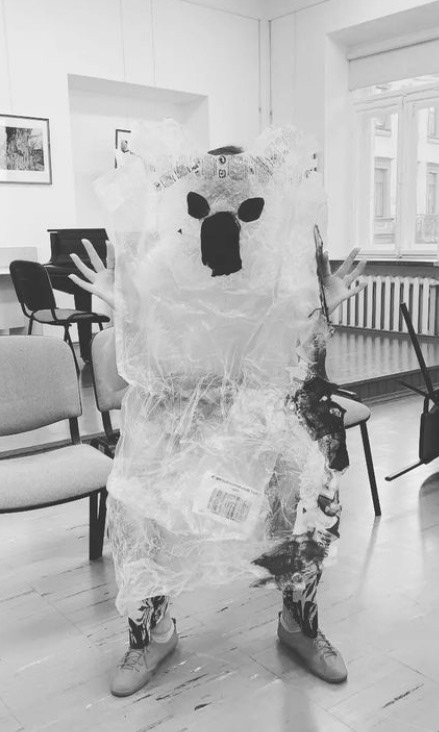
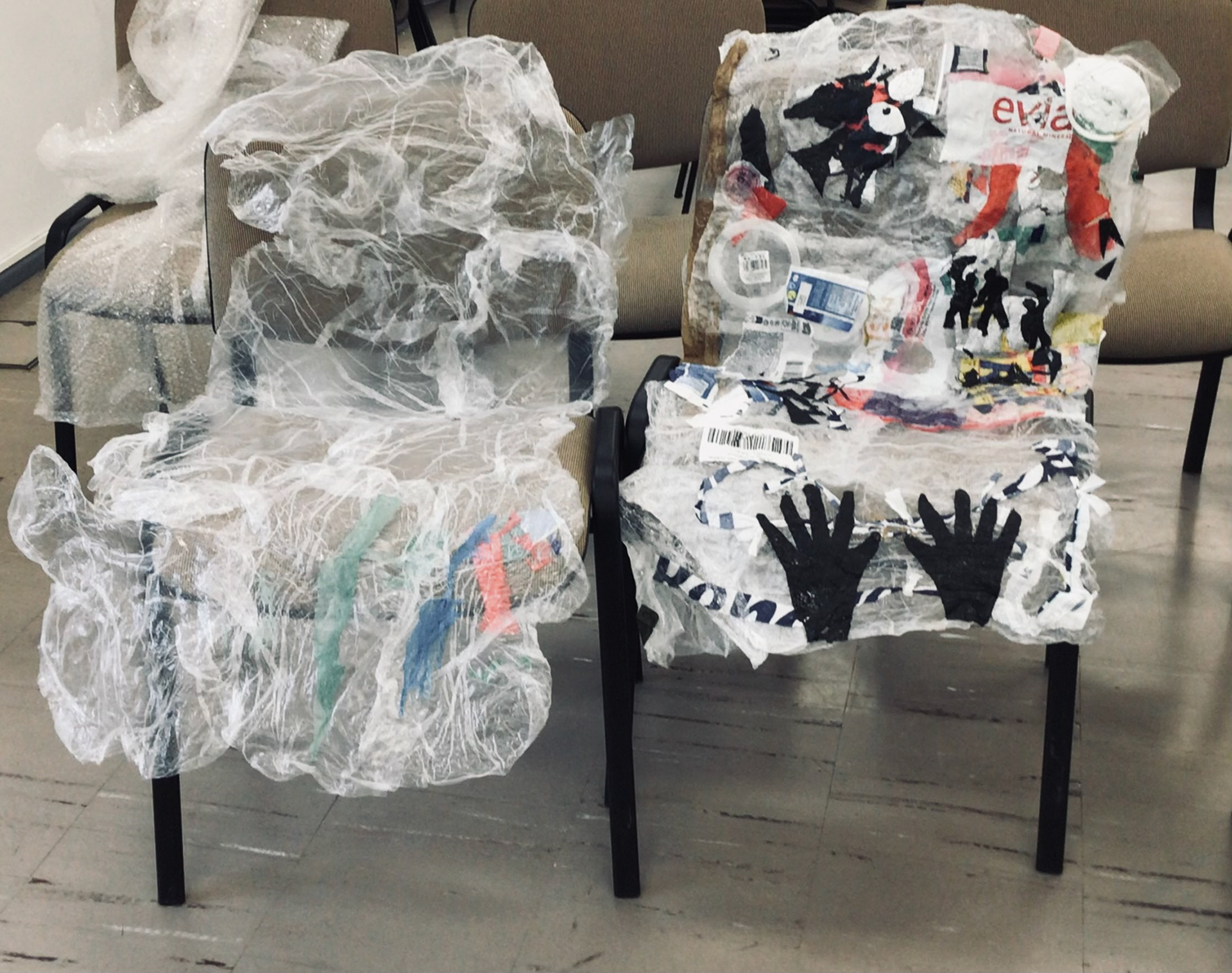
Chair coverings
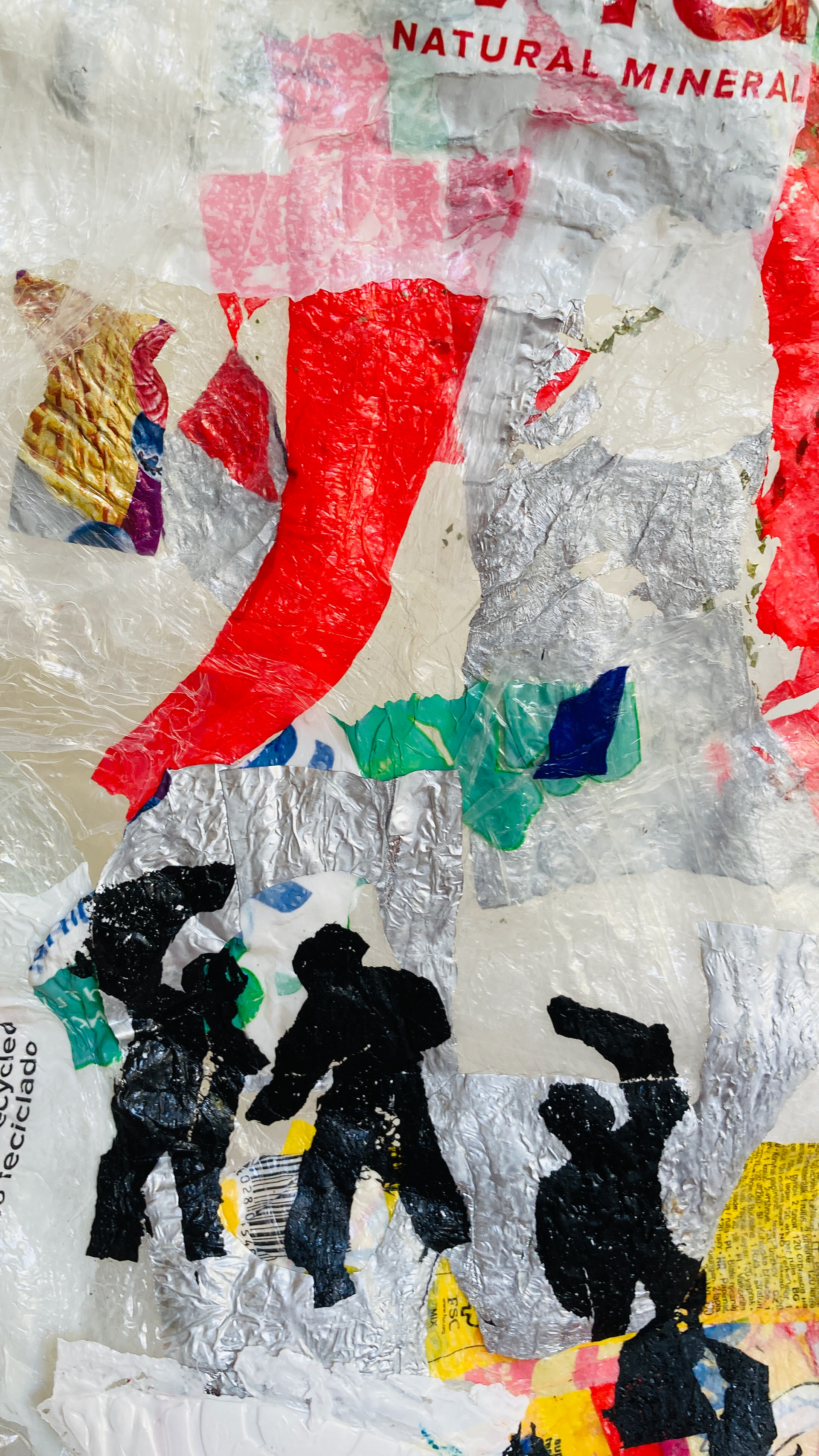
In the pictures some chair coverings and blue “blanket” I made for the rehearsals of the performance “Wasted” produced by Teatro istorijos. They are made mostly frombottled water plastic wrappings, collected in the supermarkets.
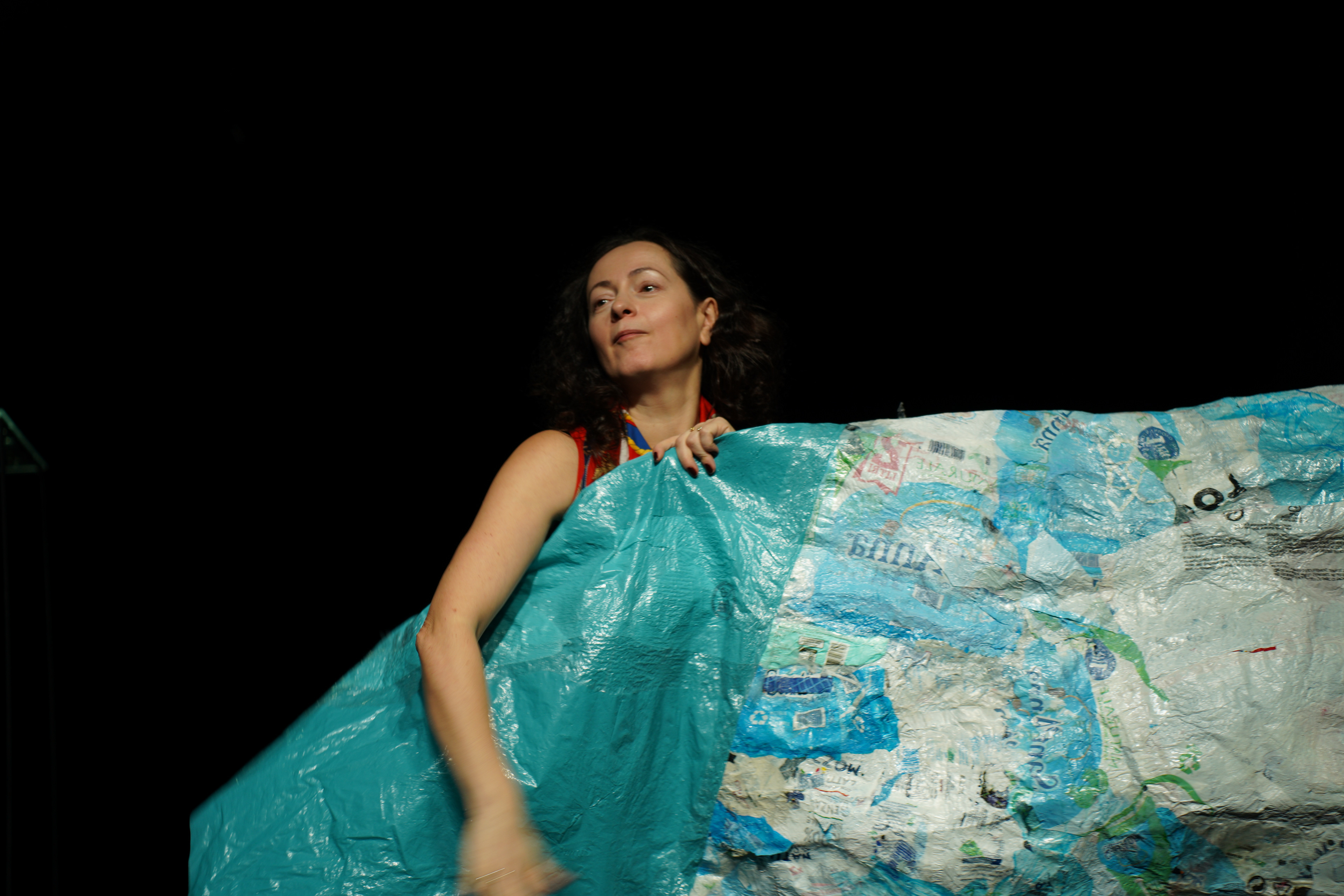
Photo Marius Senciunas
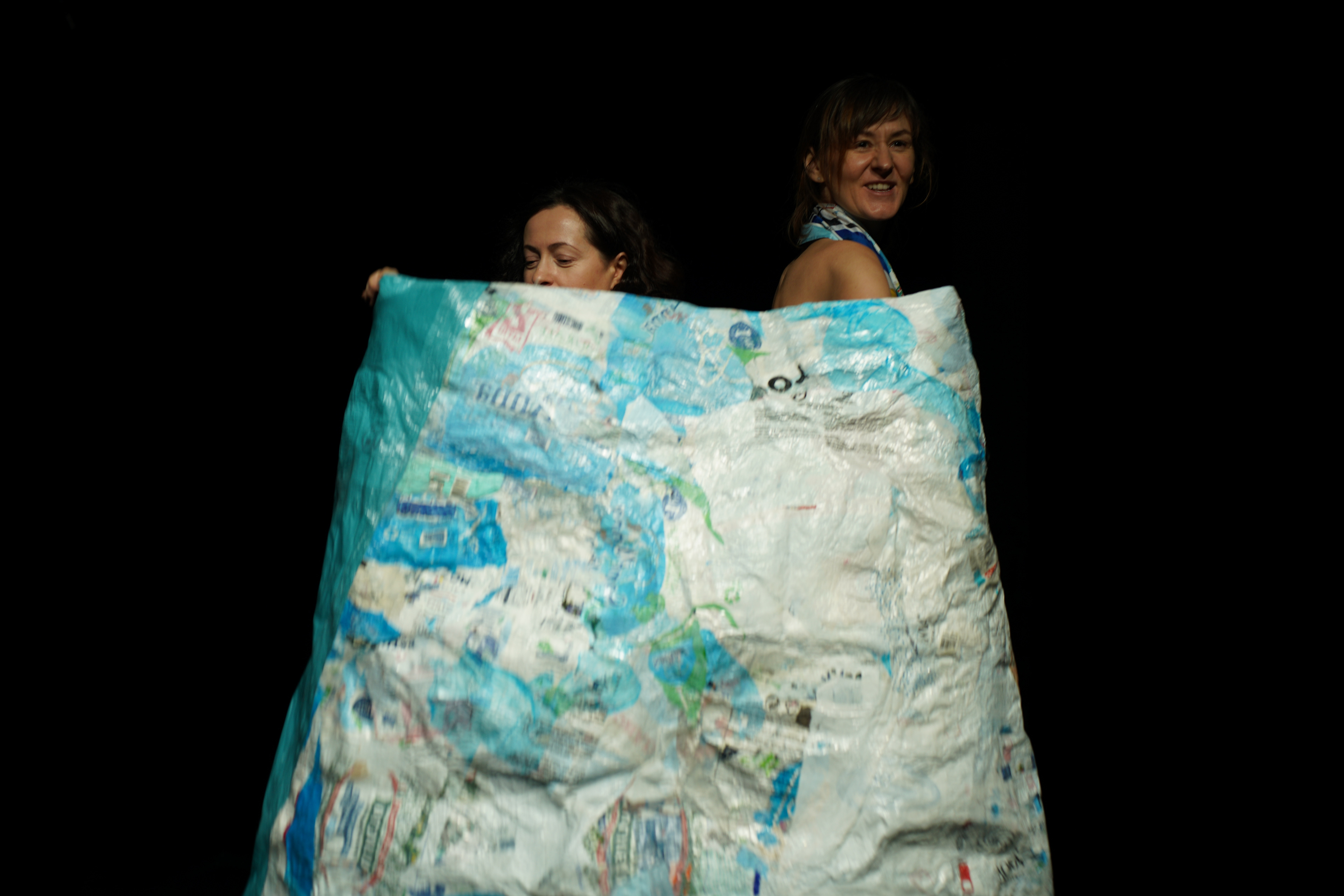
Photo Marius Senciunas
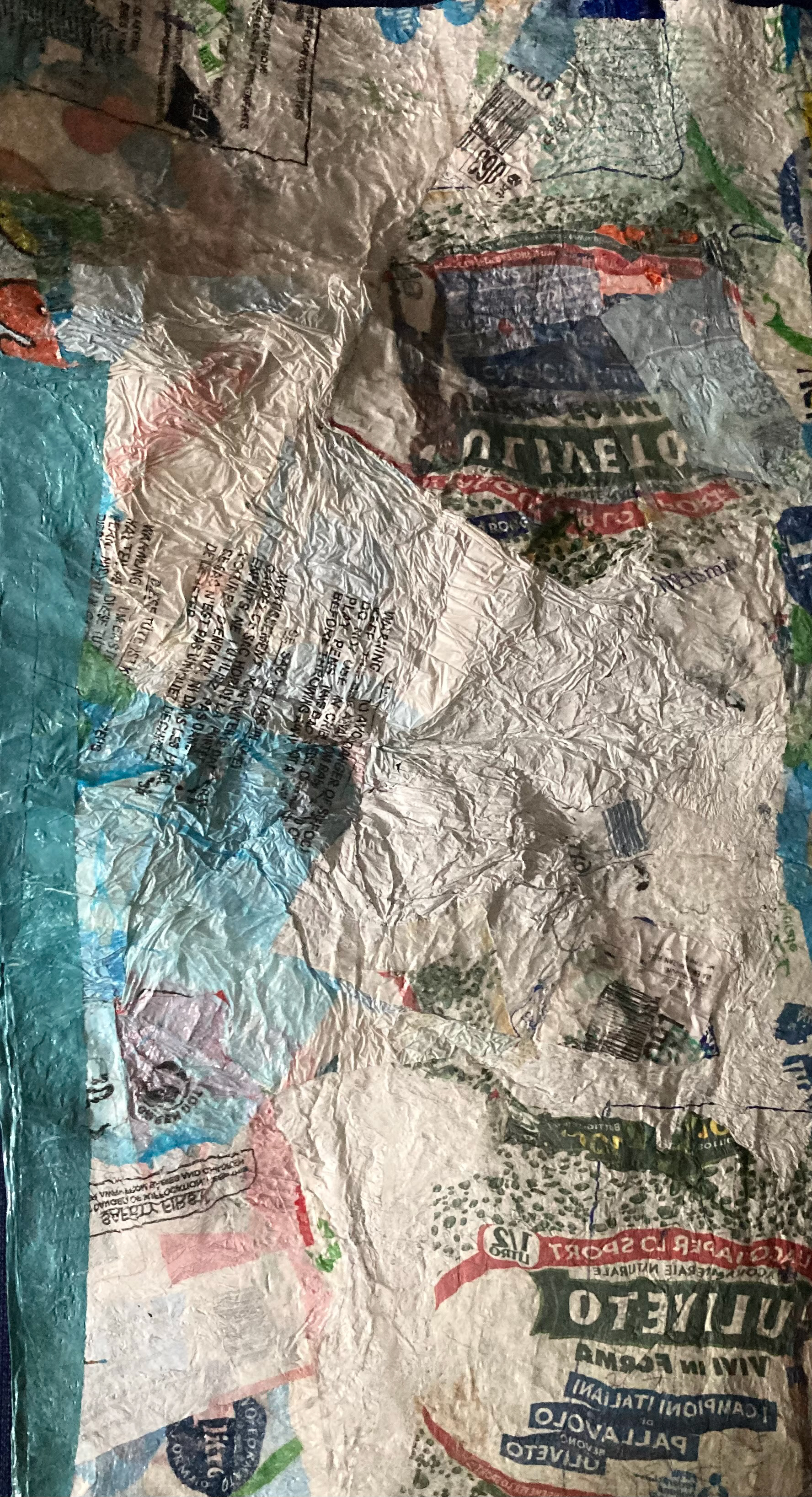
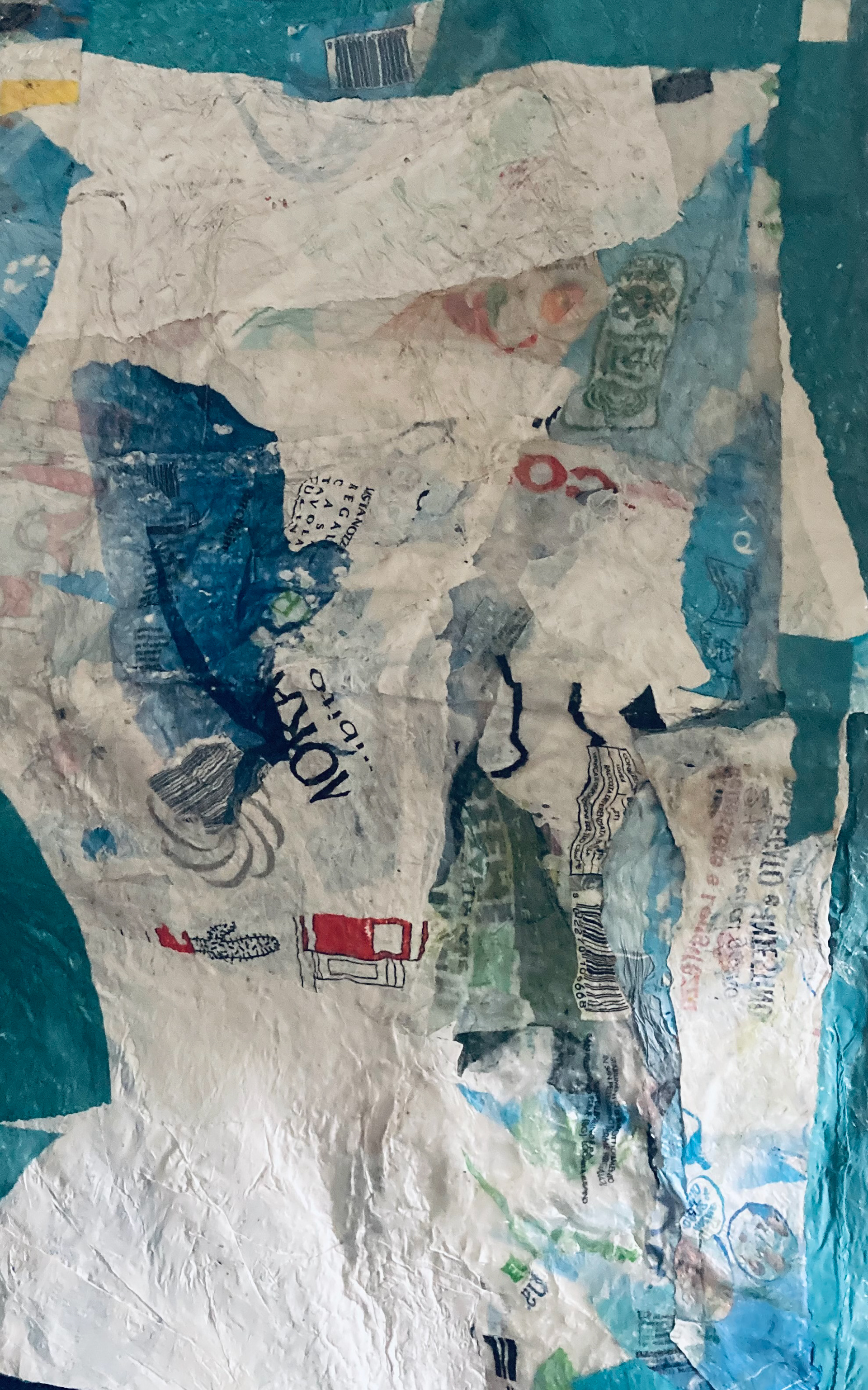
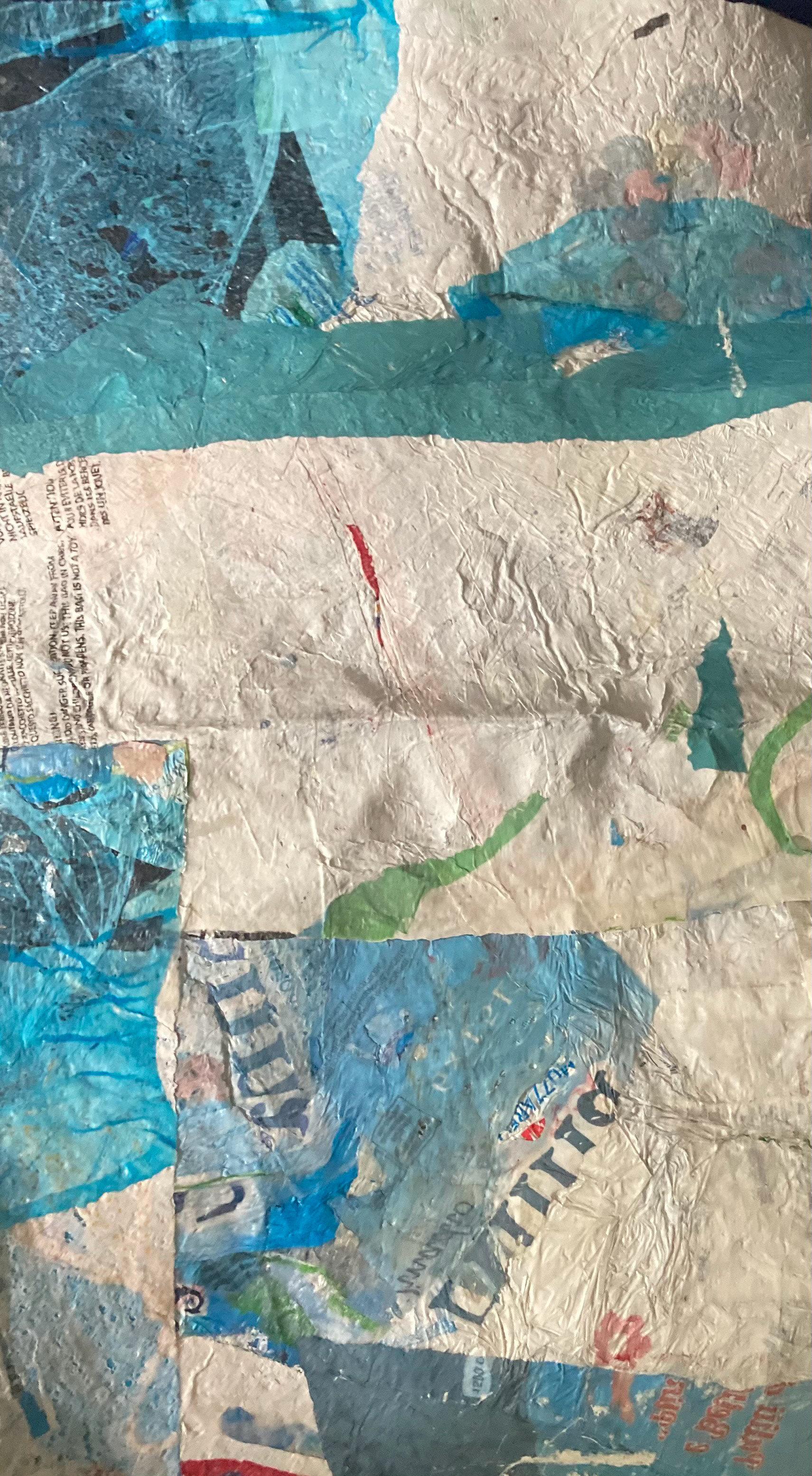
Mask made from 2 mail bags. I had put them on top of th paper mask and heated them with a heat gun. While meeting bags took the shape of the mask
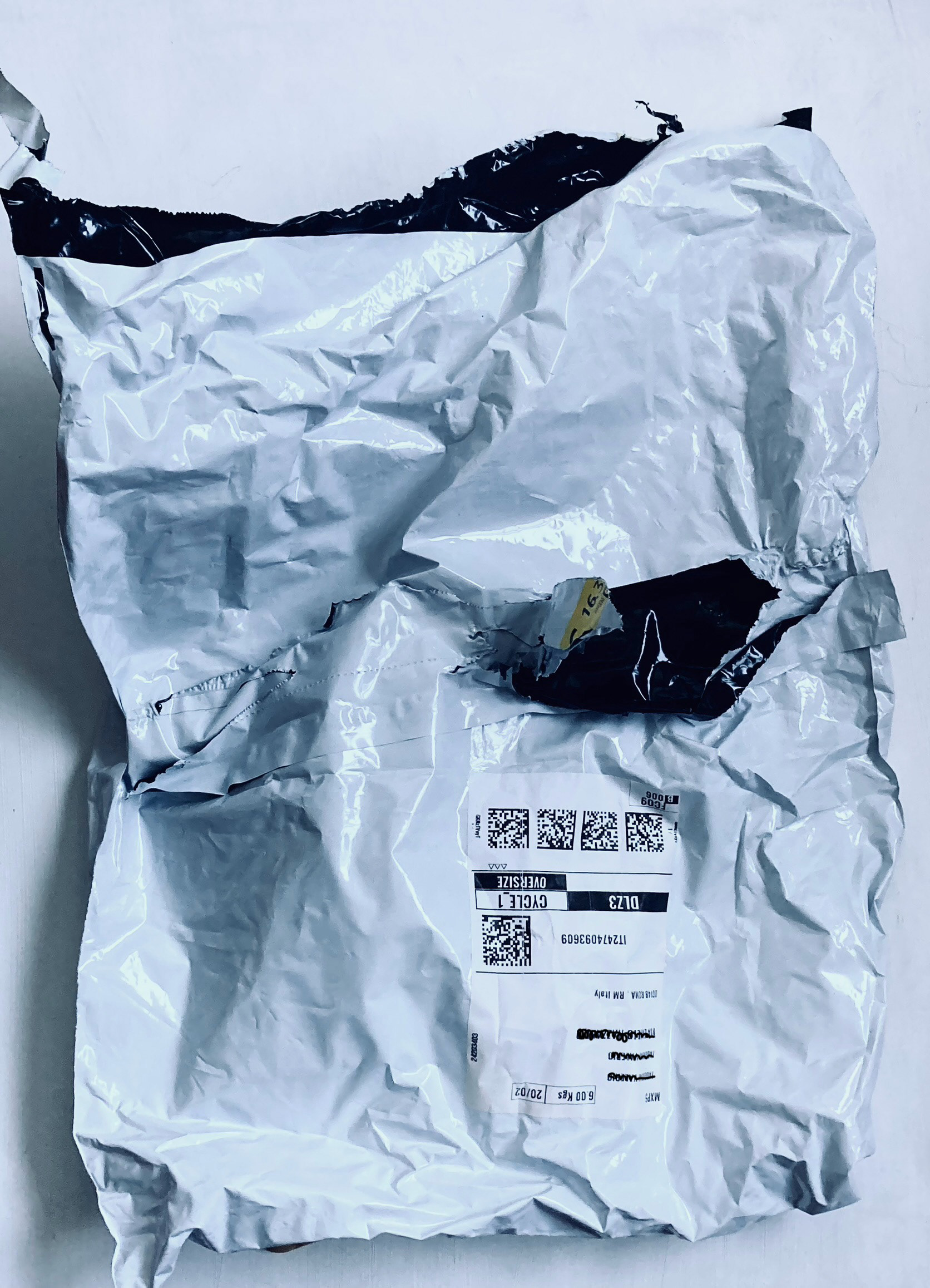
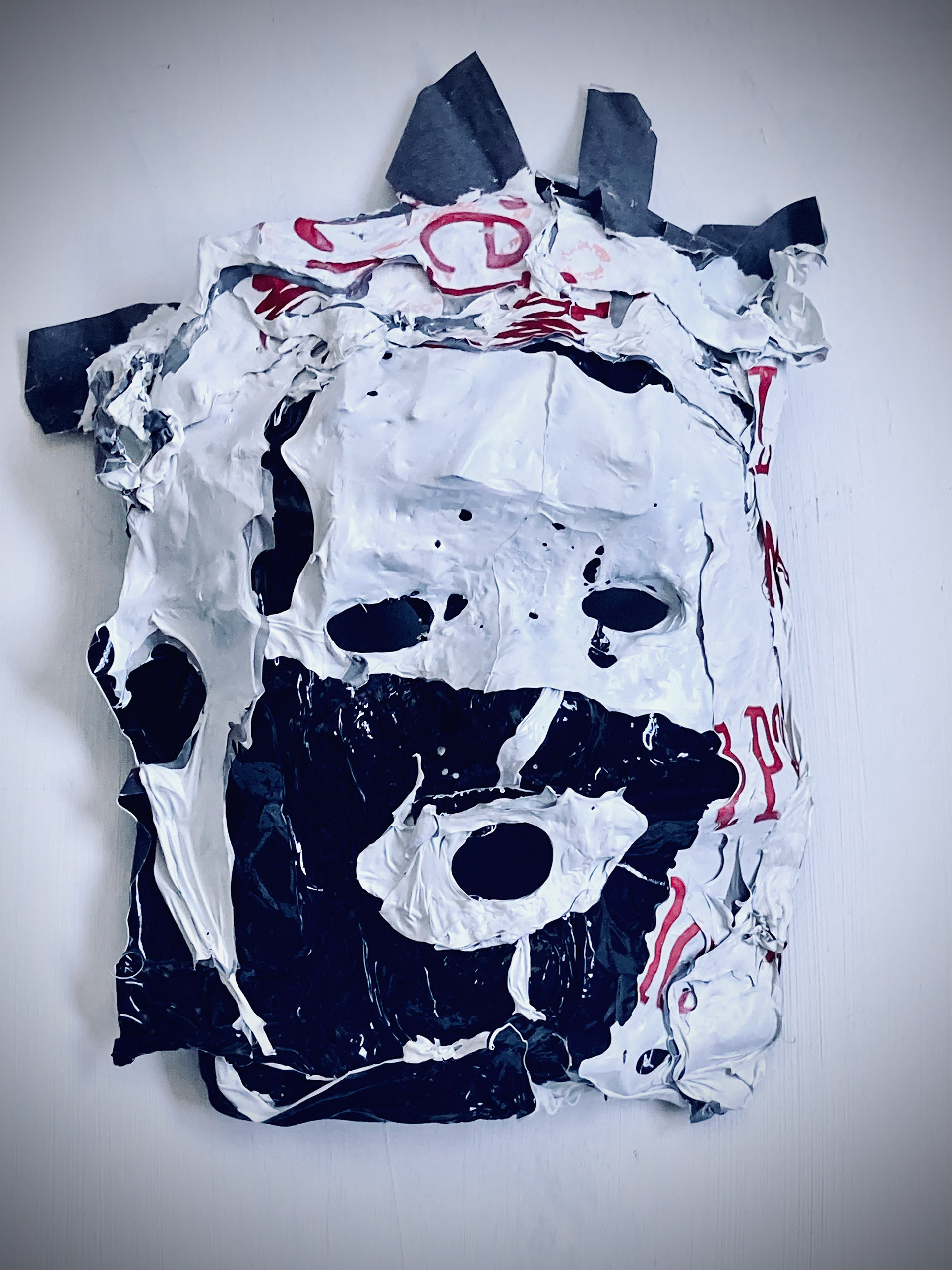
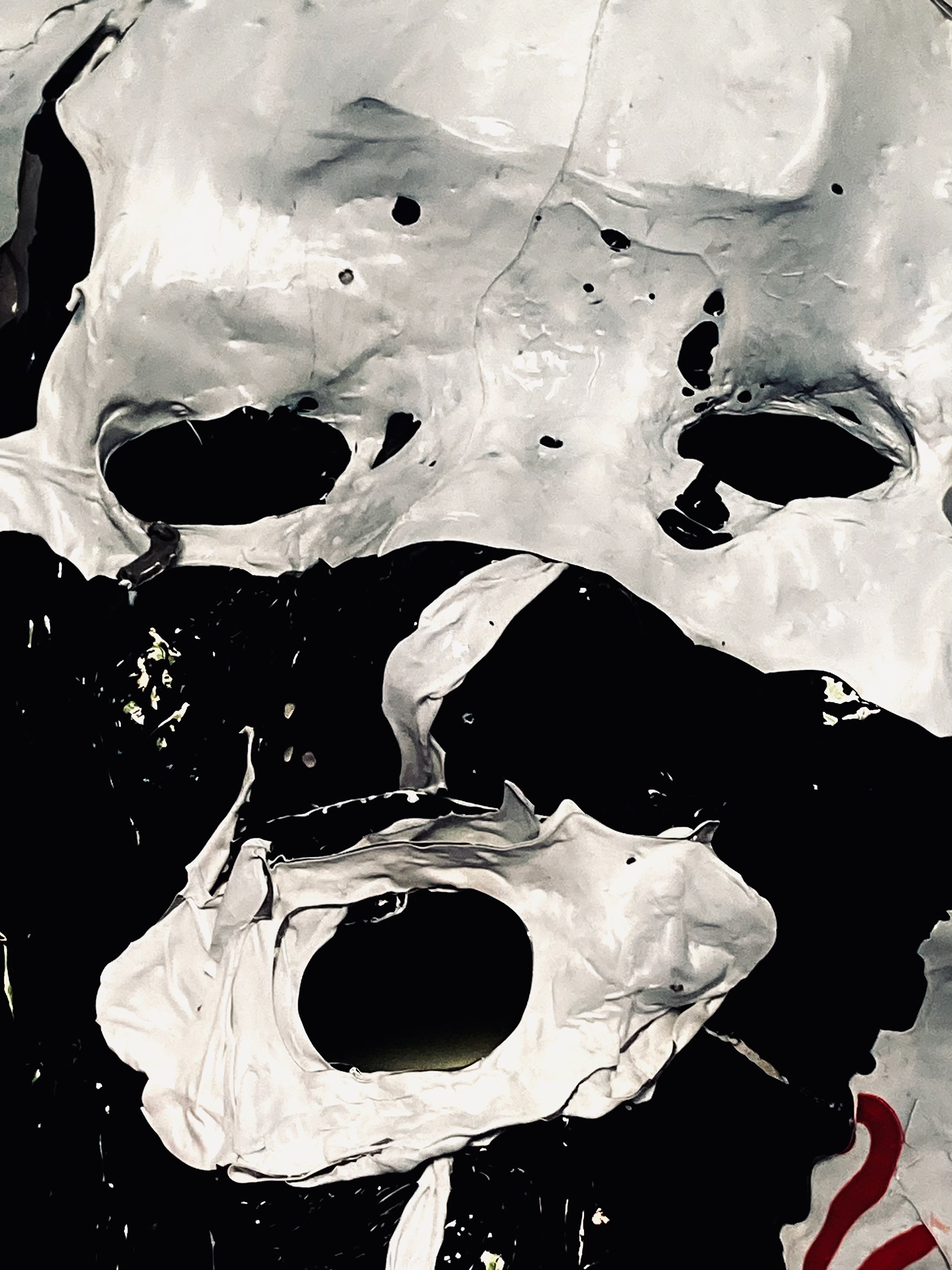
Material sample made from plastic vegetable nets. I have placed a sheet baking paper under the nets a second on top of them and ironed trough th paper. Then placed this shear of a new material on the paper mask and used a heat gun to melt it. Willie melting it took the shape of the mask.
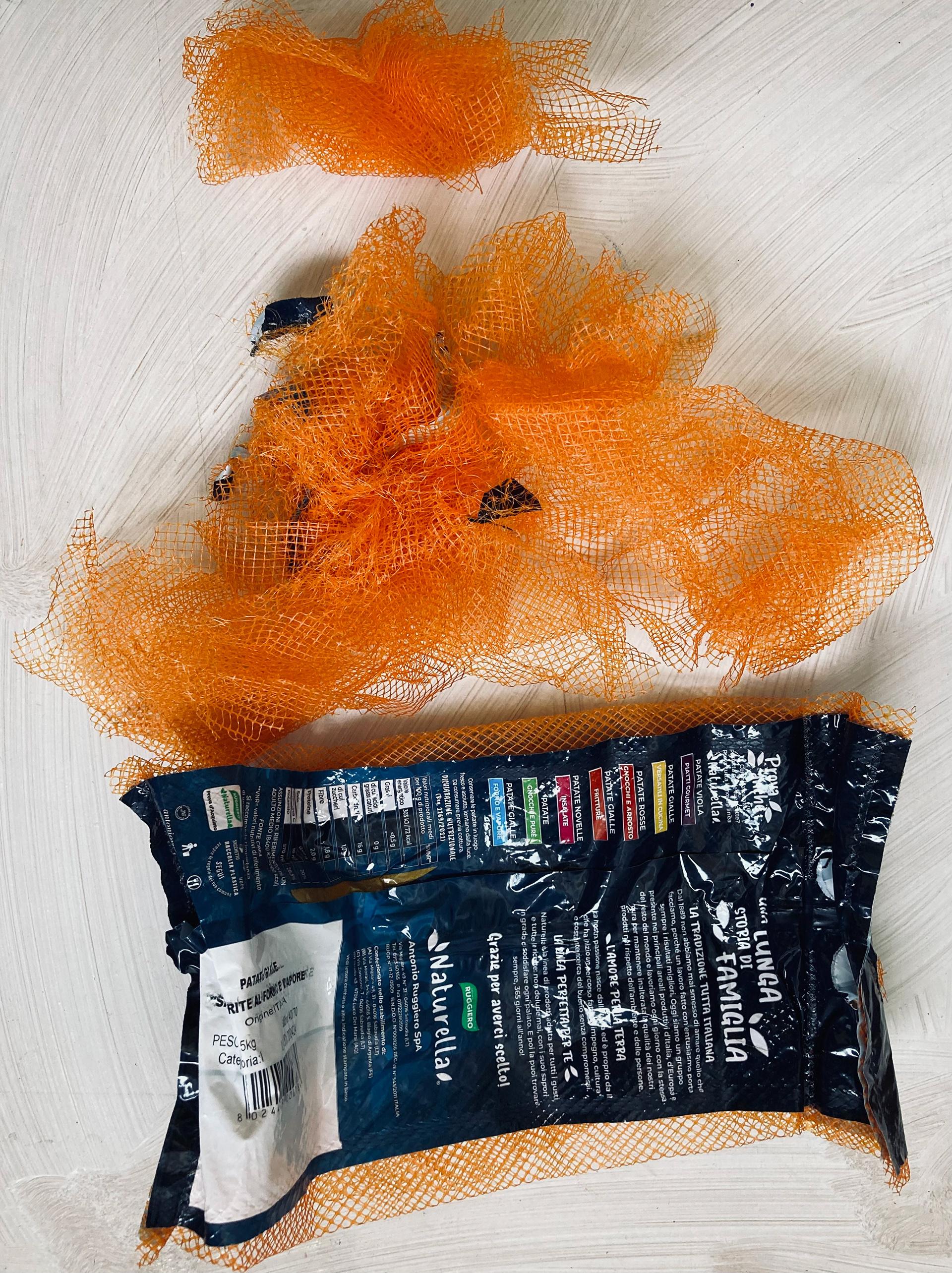
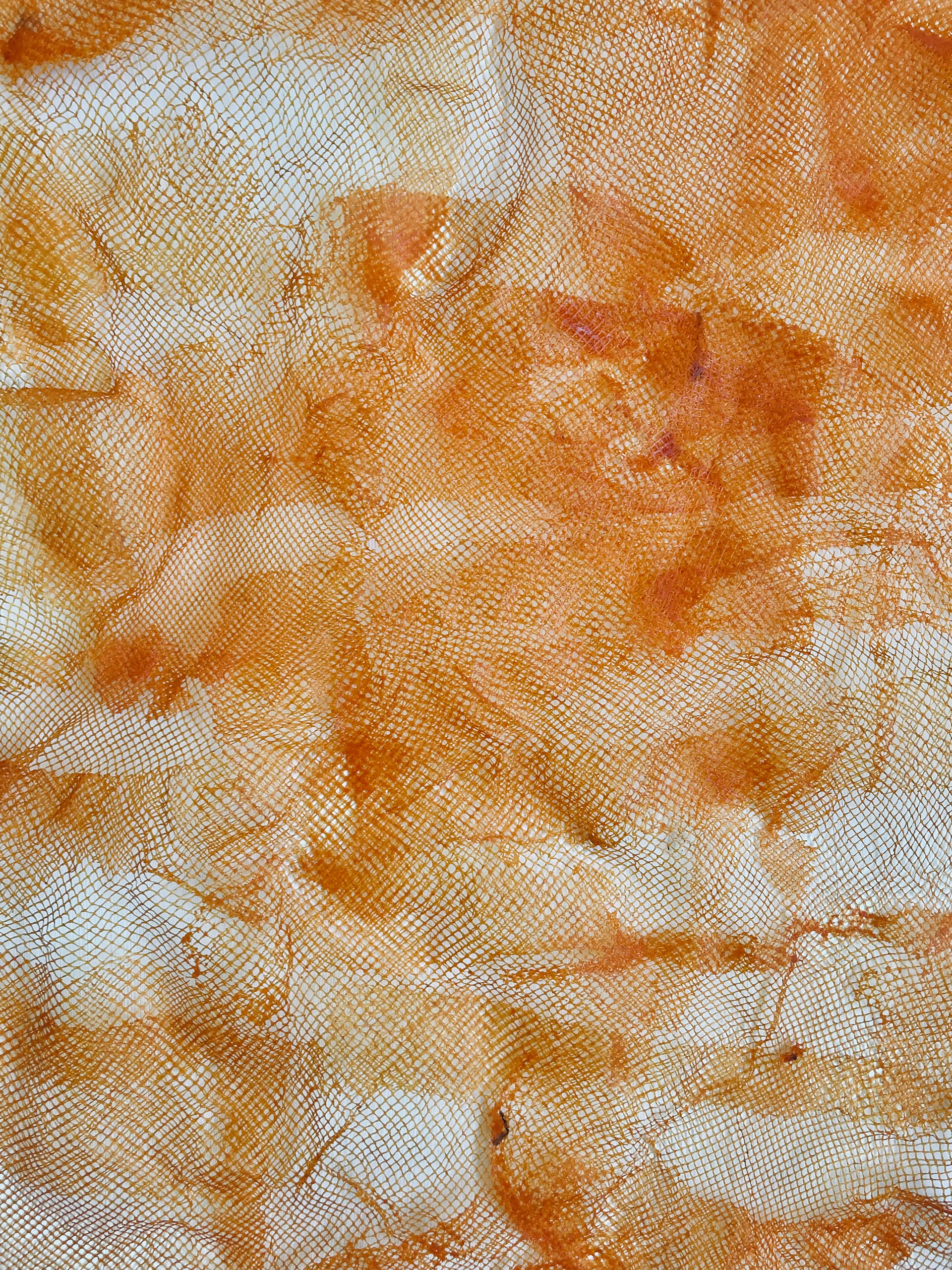
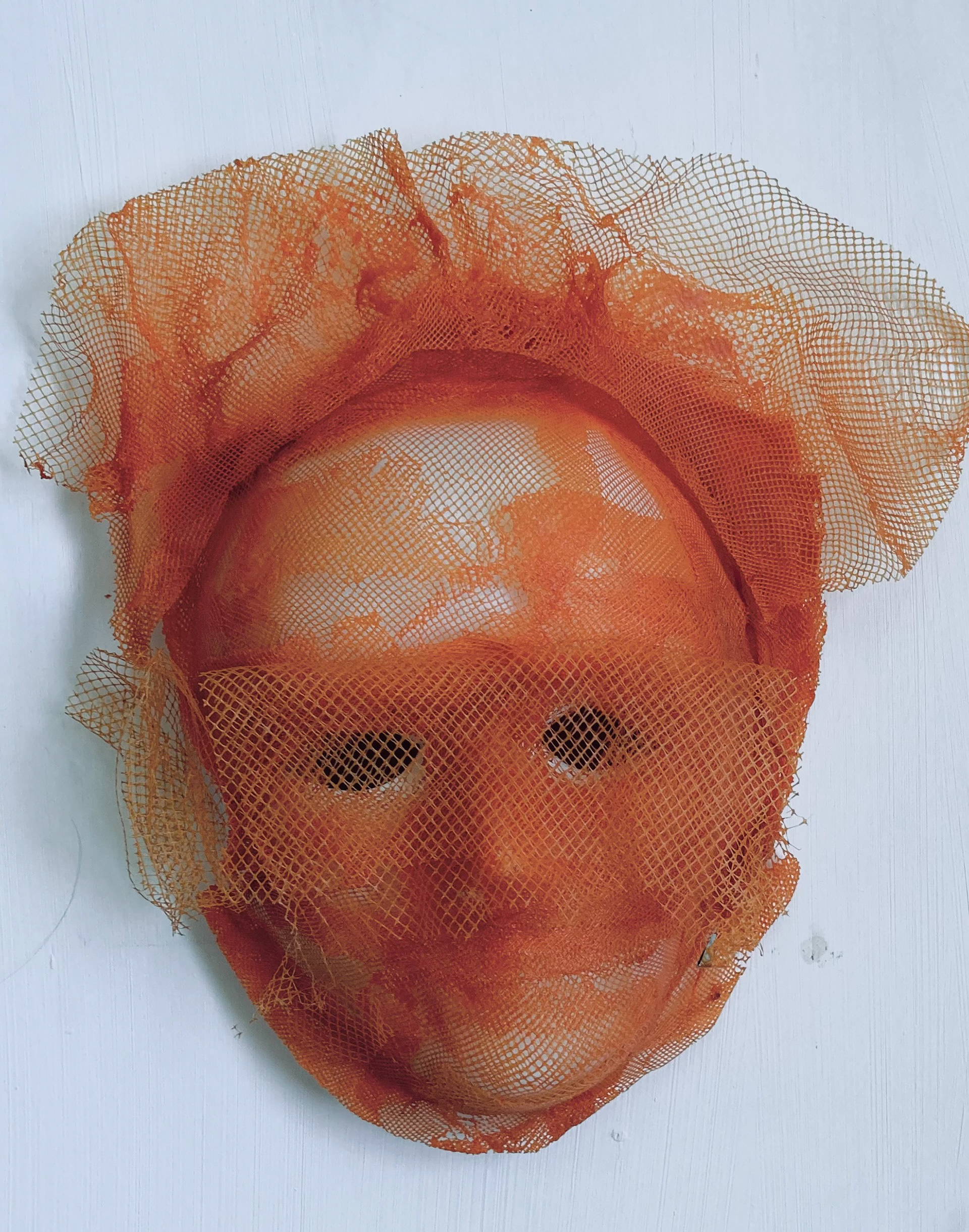
Samples of plastic yarn made with a self made drop spindle. I have used wast materials such as plastic nets from vegetables packaging , mozzarella bags and plastic ribbons
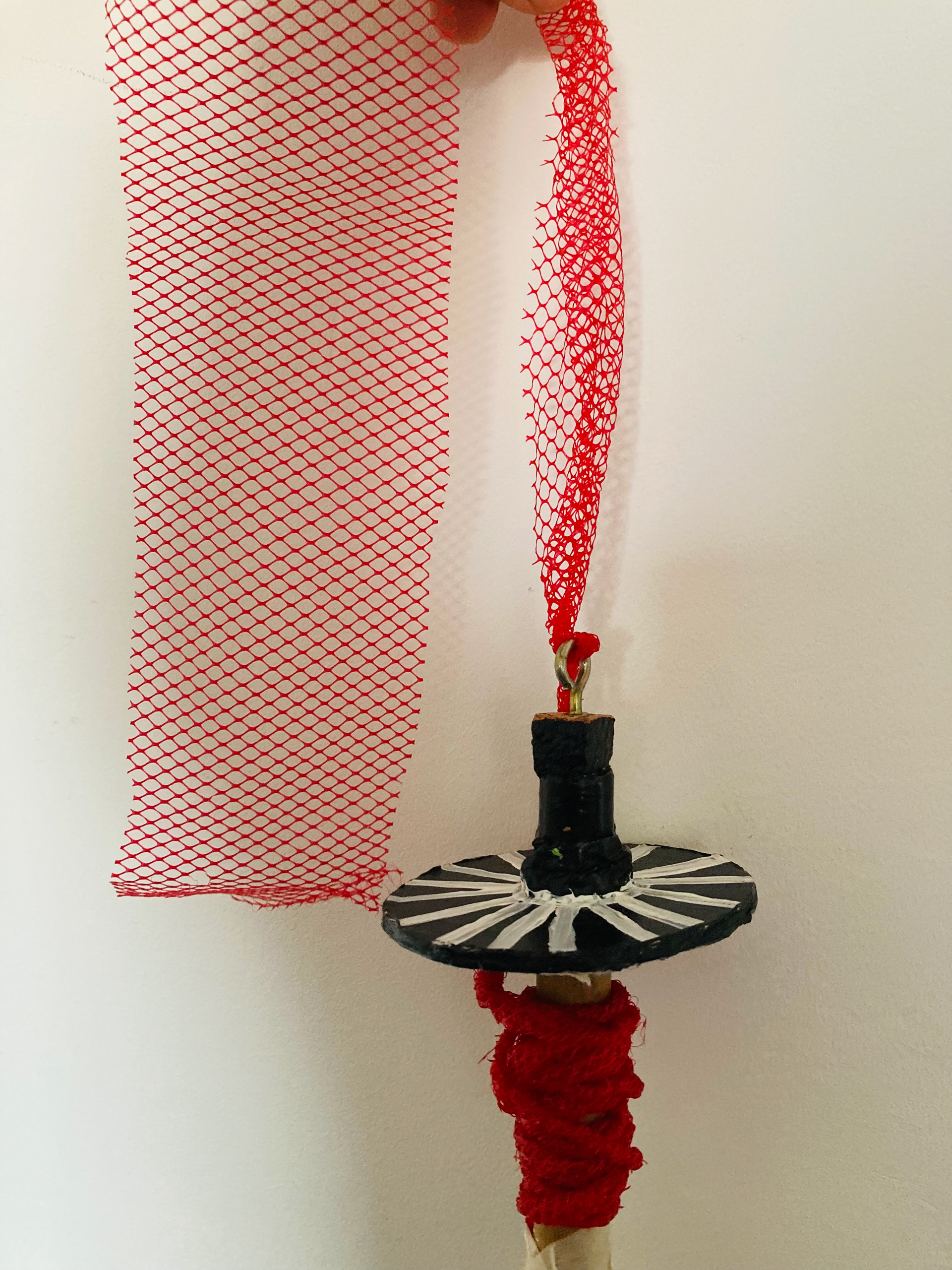
Drop spindle for spinning yarn
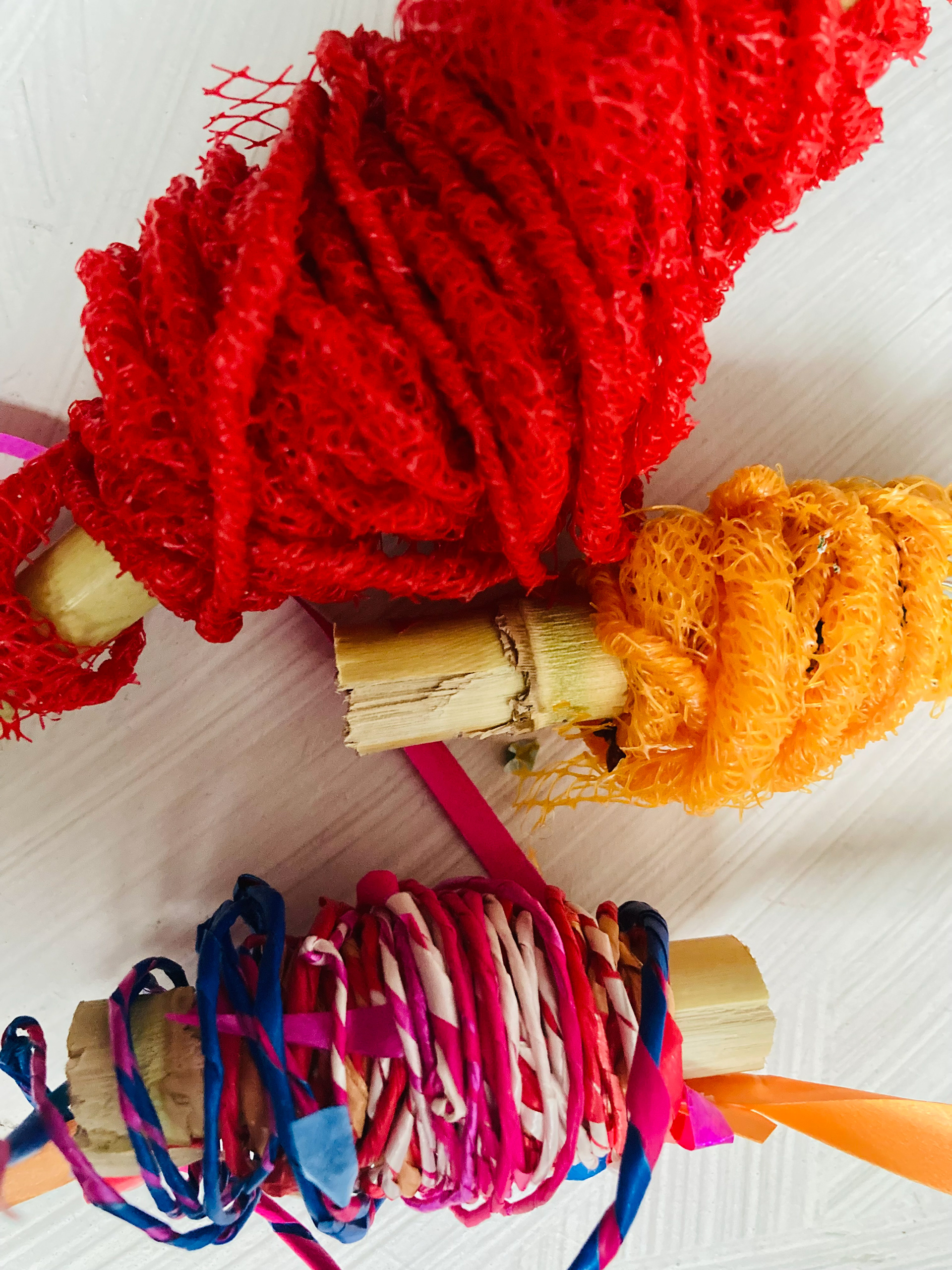
Yarn from plastic waste
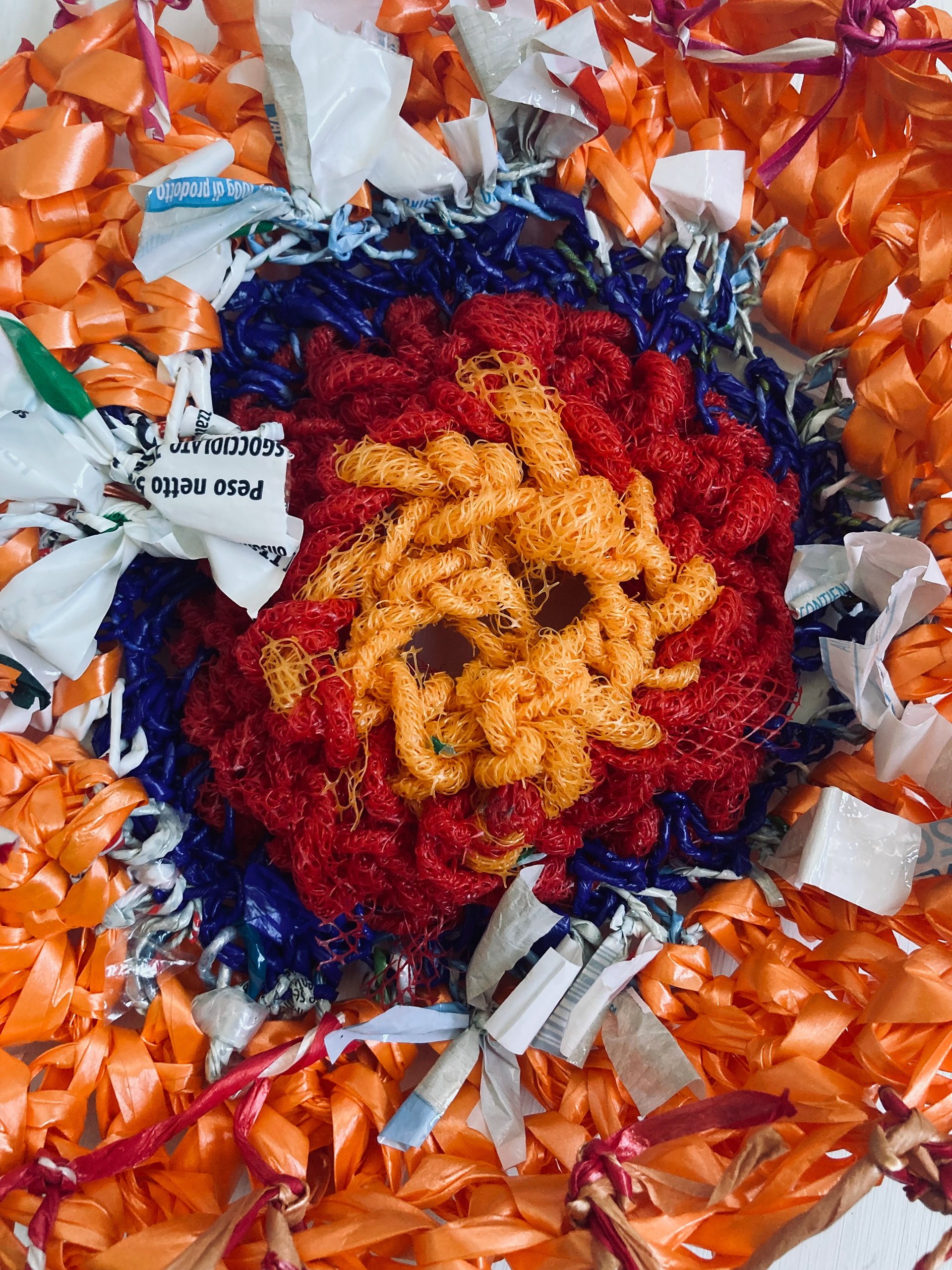
Plastic crochet sample
